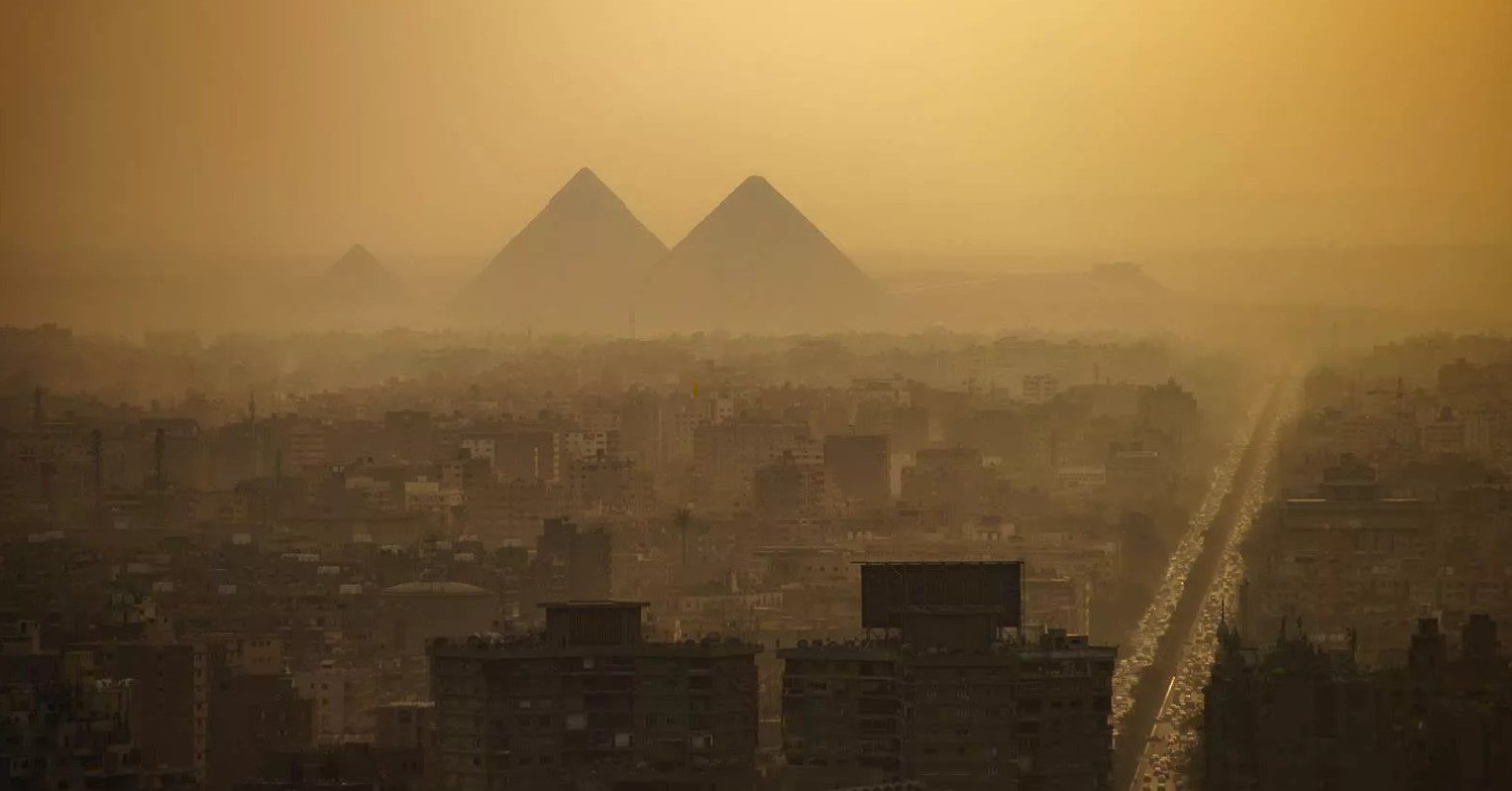For years, air pollution has plagued Egypt, particularly in its bustling cities like Cairo. The sky above the capital often appears thick and gray, a smog-like haze formed by the blend of carbon monoxide emissions from vehicles and particulate matter (PM).
Air pollution remains the greatest threat to environmental health worldwide. The World Health Organization (WHO) reported in 2021 that poor air quality contributes to 93 billion days of living with illness and over 6.5 million deaths annually. In 2019, 16 percent of deaths in Egypt were due to air pollution exposure.
Air pollution is measured with the concentration of PM, which refers to fine and hazardous airborne particulate matter–specifically PM with a diameter of 2.5 microns (PM2.5), which is a unit of length– and is weighted by population.
The average PM2.5 concentration is an indicator of air quality used by health and environmental agencies to assess pollution levels. According to WHO’s air quality guidelines, population-weighted annual average concentration PM2.5 breakpoints range from 0 to 5 micrograms per cubic meter–the measurement unit with which the concentration is measured.
Human activities such as combustion engines, industrial processes, power generation, and the burning of coal and wood elevate PM2.5 levels worldwide, according to WHO’s 2023 World Air Quality Report. These activities emit components such as ozone, nitrogen dioxide, carbon monoxide, and sulfur dioxide.
Nature contributes to this particulate pollution through dust storms, wildfires, and sandstorms, adding to the complex web of sources affecting air quality worldwide.
Air Pollution in Egypt
Egypt’s 2024 population-weighted annual average PM2.5 concentration is 42.2 micrograms per cubic meter, ranking ninth worldwide. This is an improvement from the reported concentration in 2022’s annual report of 46.5 micrograms per cubic meter.
Thirty-three percent of Cairo’s PM2.5 air pollution levels come from road transportation, according to the 2019 World Bank report.
Agricultural slash-and-burn practices constitute the second largest contributor to Cairo’s PM2.5 pollution, accounting for 20 percent of Cairo’s air pollution levels. Industrial power is the third most pollutant source, with a 17 percent share of PM2.5 concentration.
Mismanagement of waste, desert dust, biomass burning, and domestic and commercial combustion are also contributing to Cairo’s PM2.5 concentrations, as per a 2019 World Bank report.
Significant Health Issues
The meticulously monitored matter poses significant threats to human health and the environment, as it can infiltrate the lungs, permeate the bloodstream, and impact all major organs.
While the nose effectively filters out most coarse particles—such as pollen, mold spores, and dust—that are 10 microns (PM10) or larger, smaller particles are far more perilous, as reported by WHO.
Fine particles, 2.5 microns (PM2.5) in diameter, including bacteria, dust mite allergens, and pet dander, can be inhaled deeper into the lungs. Even more concerning are ultrafine particles, smaller than 0.1 microns, such as smoke soot, and viruses like Influenza A and the coronavirus, which can penetrate the bloodstream.
PM2.5 is a known catalyst for an array of dire health conditions, afflicting both the cardiovascular and respiratory systems, with increased risks of stroke, lung cancer, and chronic obstructive pulmonary disease (COPD), according to WHO.
Combating Air Pollution
In 2020, the World Bank’s Board of Executive Directors approved a USD 200 million (EGP 9.5 billion) loan to support Egypt’s efforts to combat air pollution in Cairo.
“Recent studies have estimated the annual economic cost of air pollution on health in the Greater Cairo area alone at about 1.4 percent of Egypt’s Gross Domestic Product (GDP),” the World Bank press release stated.
The six-year Greater Cairo Air Pollution Management and Climate Change Project aims to reduce greenhouse gas emissions from vehicles,
The six-year Greater Cairo Air Pollution Management and Climate Change Project is set to bolster Egypt’s initiative to lessen air pollution and climate pollutant emissions, reduce greenhouse gas emissions from vehicles, improve solid waste management, and enhance the decision-making system for air quality and climate.
The project, aligned with Egypt’s Vision 2030, the nation’s long-term strategic plan to achieve sustainable development, aims to help the government achieve its environmental goal of reducing fine particulate air pollution by 50 percent by 2030.







Comment (1)
[…] The Human and Environmental Costs of Air Pollution in Egypt are High. (2024, July 9). Egyptian Streets. https://egyptianstreets.com/2024/07/09/the-human-and-environmental-costs-of-air-pollution-in-egypt-a… […]